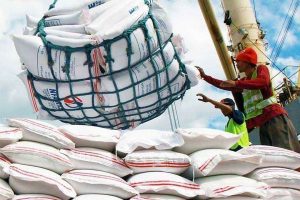By Luisa Maria Jacinta C. Jocson, Reporter
THE government’s economic managers pursued an inappropriate import-heavy model for achieving food sufficiency, which is now being disrupted by the fallout from the Russia-Ukraine crisis, a poultry industry executive said.
“Our economic managers and the Department of Agriculture (DA) believe that the template for us is Singapore, which is 90% dependent on food imports and yet is food-secure,” United Broiler Raisers Association (UBRA) President Elias Jose M. Inciong said in a phone interview.
The economic managers assumed that “we can depend on imports for food security. That’s why the agri-fisheries sector has been neglected since we got into the World Trade Organization. In short, the template is to depend on imports. Now, we are vulnerable and at risk. We are being made to pay for that policy in the coming months and years,” he added.
The Philippine Statistics Authority reported this week that the price of food and non-alcoholic beverages rose by 4.9% year on year in May, fueled by a 15.2% increase in vegetables and tubers and a 6.2% jump in fish and seafood.
Mr. Inciong said that the incoming administration can forestall a supply crisis by supporting domestic production.
“Our advantage is since we still have the resources to produce, if the incoming administration will focus on production and support income-generating projects, we can minimize our risk of a really major food crisis,” he said.
“Producers are being made to compete with subsidized products; since imports have become more expensive, everyone is at risk now. Best way to solve this is for the government to support production in more creative ways,” he added.
The food crisis triggered by the war between Ukraine and Russia has led governments to restrict the export of food commodities to secure their domestic supply. Ukraine is a major producer of grain and edible oils, while Russia is also a major grain and fertilizer producer, apart from being a leading energy exporter. The war has turned the Black Sea into a conflict zone, restricting both countries’ exports through that body of water.
According to Moody’s Analytics, protectionism is surfacing throughout the Asia-Pacific in response to the food crisis.
“Protectionist policies tend to be short-lived and isolated. But in 2022, we are seeing an unusual convergence of protectionist policies on multiple food staples. This comes against the backdrop of disrupted supply chains and geopolitical uncertainties related to Russia’s invasion of Ukraine, which pose a longer-term threat to global food security,” it said in a report.
Moody’s Analytics said that the food crisis will continue over the next two to three years if substitutes cannot be found.
“For example, the variants of wheat grown in Ukraine are winter wheats, which are harvested in late June to July. Today, much of the country is in turmoil, there is limited capacity to move what little harvestable crops are left, and many silos to store the harvest have been destroyed,” it said.
The report projected a significant food shortage in 2023, with underdeveloped economies most exposed.
“And if the invasion drags on till September or November, there will not be enough time for planting wheat in Ukraine for the following year. Making matters worse, Russia is the largest exporter of fertilizer, which are necessary for reliable harvests,” it said.
“The longer Russia’s invasion of Ukraine continues, the higher food prices will go and the greater the risk of food shortages. Geopolitical forces are coming to bear on global food security. Whether it is palm oil from Indonesia, wheat and sugar from India, or chicken from Malaysia, major food producers are tightening export policies to tame inflation and shore up domestic supplies,” it added.
